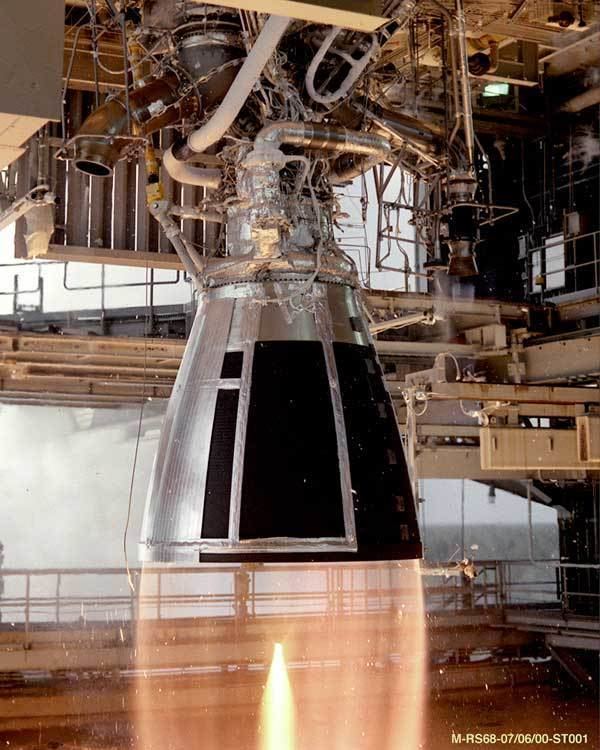Status Retired | Date 1969 Successor RD-270M | |
 | ||
Designer V. Glushko, USSR/Ukraine | ||
RD-270 (Russian: Ра́кетный дв́игатель 270, Rocket Engine 270, 8D420) is a single-chamber liquid-bipropellant rocket engine designed by Energomash (USSR/Russia) in 1960–1970. It was to be used on the first stages of proposed heavy-lift UR-700 and UR-900 rocket families. It has the highest thrust among single-chamber engines of USSR and Russia, 640 metric tons at the surface of Earth. The propellants used are unsymmetrical dimethylhydrazine (UDMH) and nitrogen tetroxide (N2O4). The chamber pressure is among the highest, being about 26 MPa. This was achieved by applying full-flow staged combustion cycle for all the incoming mass of fuel, which is turned into a gas and passes through a couple of turbines before being burned in the combustion chamber. This allows it to achieve a specific impulse of 301 s (2.95 km/s) at the Earth's surface.
Contents
The engine testing was underway when the decision was made to cancel the program. The development of it was stopped with all other work on corresponding rocket projects on 11 December 1970.
History
The development of RD-270 started on 26 June 1962. Preliminary investigations and development of engine as much as its further production was performed under the guidance of Valentin Glushko and finished in 1967. It became the most powerful engine in the world with use of high-boiling propellant to date. In the period 1967–1969, several fire tests were performed with experimental engines that were adapted for work at sea level and had short nozzle. In total, 27 fire tests were performed for 22 engines, three engines were tested twice, and one of them was tested three times. All works stopped later together with corresponding activities on UR-700 project.
In the period of development Glushko studied use of pentaborane "zip" propellants in modified RD-270M engine. This would have created immense toxicity problems but increased the specific impulse of the engine by 42 seconds (0.41 km/s).
Design
The engine throttle range was 95–105%, the thrust vector control range was ±12° (project R-56) and ±8° for UR-700 rocket family. The oxidizer-to-fuel ratio was 2.67 and can be changed by up to 7%.
To achieve such a high specific impulse and pressure in combustion chamber as RD-270 has, two circuits of full-flow staged combustion cycle were applied. The pair of turbines with preburners turns the fuel into the gaseous form and circulates all of the fuel components. One of the turbines uses the fuel-rich gas to power a fuel pump, another one uses the oxidizer-rich gas to power the oxidizer pump. As a result, the main combustion chamber (MCC) burns only generator gas. The engine controller regulates the functions of the two independent fuel and oxidizer circuits.
With the purpose to cool MCC it has layered wall structure with four internal belts of slots. Some parts of nozzles are covered by zirconium dioxide for thermal protection.
